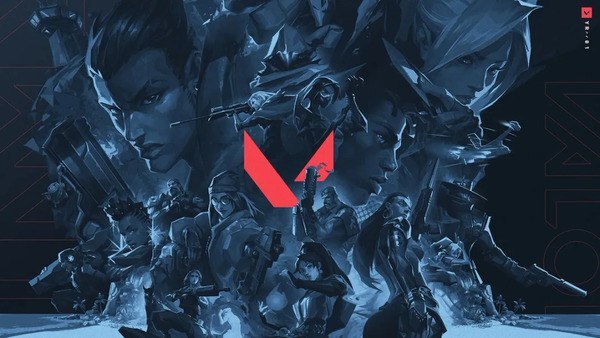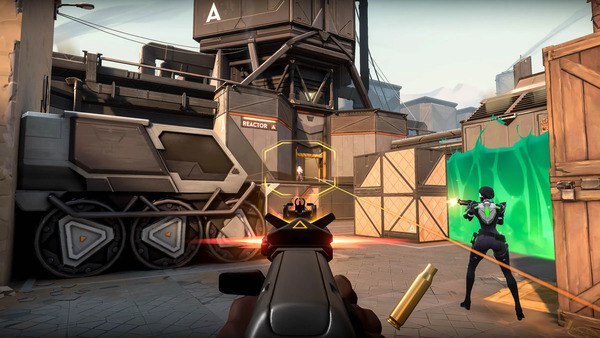Valorant, Riot Games’ tactical first-person shooter (FPS), has quickly risen to prominence since its release in June 2020. The game’s blend of precise gunplay and unique agent abilities has captivated players worldwide. However, despite its success, Valorant faces a significant issue that undermines the integrity of its competitive scene: smurfing. Smurfing, the practice of high-skilled players using low-ranked accounts to compete against less experienced opponents, has become a major concern, impacting the fairness of matches and overall player satisfaction. This article explores the complexities of smurfing in Valorant, its effects on the game’s ecosystem, and potential strategies to address the problem.
Understanding Smurfing in Valorant

Definition and Mechanics
Smurfing involves experienced players creating or using secondary accounts to play in lower-ranked games, often to win easily or to bypass competitive restrictions. In Valorant, this practice can distort matchmaking by placing skilled players in games with those who are significantly less experienced. The term “smurfing” originated from the early days of online gaming and has since evolved to encompass various strategies used to exploit ranking systems.
Motivations Behind Smurfing
Players engage in smurfing for several reasons. Some seek a more relaxed environment to experiment with new strategies or agents without affecting their main account’s rank. Others may want to experience easier victories and higher win rates. Additionally, smurfing can serve as a means of bypassing competitive restrictions, such as ranked queues that are locked due to performance issues or bans.
Historical Context of Smurfing in Competitive Games

Early Instances in Online Gaming
Smurfing first gained prominence in the early days of online competitive games, such as Counter-Strike and StarCraft. In these games, skilled players used secondary accounts to dominate lower-ranked matches, leading to frustrations within the player base and prompting developers to implement countermeasures.
Evolution and Adaptation
As online gaming evolved, so did the tactics and methods used by smurfers. The rise of sophisticated ranking algorithms and anti-cheat systems in games like Valorant has led to more advanced forms of smurfing. This evolution highlights the ongoing cat-and-mouse game between developers and smurfers, with each side adapting to new challenges and opportunities.
The Impact of Smurfing on Valorant’s Matchmaking System
Disruption of Fair Play
Smurfing undermines the core principle of fair play in Valorant’s matchmaking system. When high-skilled players are matched against lower-skilled opponents, it skews the results and prevents genuine skill progression. This imbalance can lead to frustrating experiences for less experienced players, who may feel that their efforts are rendered meaningless by unfair matches.
Effects on Player Retention

The frustration caused by smurfing can negatively impact player retention. New or lower-ranked players who frequently encounter smurfers may become disillusioned with the game, leading to decreased engagement and potential abandonment. Ensuring a fair and balanced competitive experience is crucial for maintaining a healthy and active player base.
Identifying Smurfing: Signs and Indicators
Common Behavioral Patterns
Certain behaviors and indicators can help identify smurfing in Valorant. These include:
- Unusual Skill Discrepancies: A significant gap between a player’s performance and their account’s rank.
- Inconsistent Gameplay: High-level play interspersed with periods of seemingly casual or uncoordinated play.
- Unusual Account Creation Patterns: Newly created accounts that exhibit high skill levels and quickly climb the ranks.
Tools and Methods for Detection
Valorant employs a variety of tools and methods to detect smurfing, including:
- Match Data Analysis: Analyzing performance metrics, such as kill-to-death ratios and accuracy, to identify discrepancies.
- Behavioral Analysis: Monitoring player behavior and patterns that deviate from typical ranks.
- Community Reports: Allowing players to report suspected smurfers, which can trigger further investigation.
Riot Games’ Response to Smurfing

Current Measures and Policies
Riot Games has implemented several measures to combat smurfing in Valorant, including:
- Ranked Restrictions: Enforcing restrictions and penalties for account boosting and smurfing activities.
- Enhanced Matchmaking Algorithms: Continuously refining matchmaking algorithms to better detect and address skill discrepancies.
- In-Game Reporting Systems: Empowering players to report suspicious behavior, which helps in identifying and addressing smurfing.
Challenges and Limitations
Despite these efforts, Riot Games faces challenges in fully eradicating smurfing. Smurfers often use sophisticated tactics to evade detection, and balancing the need for effective enforcement with maintaining a positive player experience can be difficult. Additionally, the anonymity of online gaming can complicate efforts to accurately identify and address smurfing.
Community Reactions and Perceptions
Player Frustrations
The community’s reaction to smurfing in Valorant has been largely negative. Many players express frustration with the frequent encounters of high-skilled opponents in lower ranks, which they feel undermines their progress and enjoyment. This frustration is often voiced through forums, social media, and direct feedback to Riot Games.
The Role of Community Advocacy

Community advocacy plays a crucial role in addressing smurfing. Players and community leaders actively discuss and highlight the impact of smurfing, which can drive awareness and prompt Riot Games to take action. The collective voice of the community can influence the development of more effective countermeasures and policies.
Proposed Solutions and Innovations
Potential Technological Solutions
Several technological solutions could help address smurfing, including:
- Advanced Machine Learning Algorithms: Using machine learning to identify and predict smurfing patterns more accurately.
- Improved Data Analytics: Leveraging detailed data analytics to better understand and address skill discrepancies in matchmaking.
- Enhanced Anti-Cheat Systems: Integrating anti-cheat technologies that can detect and prevent smurfing more effectively.
Policy and System Adjustments
Adjusting policies and systems can also contribute to mitigating smurfing. Potential adjustments include:
- Stricter Account Verification: Implementing more rigorous account verification processes to deter smurfing.
- Rank Locking: Introducing systems that lock ranks for a period, preventing rapid account progression and smurfing.
- Player Education: Educating players about the impact of smurfing and promoting fair play.
The Future of Smurfing Prevention in Valorant
Ongoing Efforts and Innovations
The fight against smurfing is an ongoing process, requiring continuous innovation and adaptation. Riot Games will need to remain proactive in developing and implementing new strategies to address smurfing. This includes staying updated with the latest advancements in technology and player behavior analysis.
The Role of Community and Developer Collaboration
Collaboration between the community and developers will be essential in tackling smurfing effectively. By working together, players and developers can share insights, report issues, and develop solutions that address the root causes of smurfing. A united effort will contribute to creating a more balanced and enjoyable competitive experience.
Conclusion
Smurfing remains a significant challenge in Valorant, affecting the integrity of matchmaking and player satisfaction. The practice undermines fair play, disrupts the competitive balance, and can lead to negative experiences for less experienced players. Riot Games has implemented various measures to combat smurfing, but the evolving nature of the problem requires ongoing innovation and adaptation.
Addressing smurfing effectively involves a combination of advanced technological solutions, policy adjustments, and community engagement. By leveraging these strategies and fostering collaboration between players and developers, Valorant can work towards a more balanced and enjoyable competitive environment. As the game continues to grow, ensuring fair play and maintaining the integrity of its competitive scene will be crucial for its long-term success.


